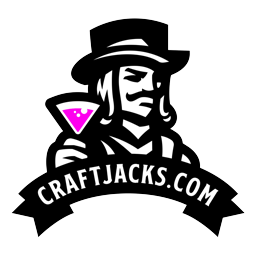What is Skunked Beer and Why Does It Get Skunky?
Skunked beer occurs when a light source penetrates the glass container of beer over a long period of time. By containers, we mean glass bottles. And by skunky beer, we mean that the taste itself will be vaguely reminiscent of the smell of a skunk’s spray.
Written by CraftJack | Updated | 3 min read
Interesting Tools
- Beer BrüMate Hopsulator
- Brewing Northern Brewer Beer Making Kit
- Spirit Crystal Whiskey Glasses
- Wine Wine Decanter/Aerator
Sound gross? It kind of is. Skunked beer is a craft brewers nightmare, as their product (and sales) relies on the perception of quality more than large, corporate macro brewers.
Why does Beer get Skunky?
Beer, like most things, ages. In fact, some beer even relies on live yeast.
But aging is not what causes skunking. Skunked beer comes from the beer being exposed to certain conditions, most notably the introduction of UV rays from a light source. This means that bottled beer is more likely to skunk than canned beer or beer from a keg.
In other words, the Iso-Alpha-Acids (Isohumulones) from the hops end up as 3-methyl-2-butene-1-thiol (SCIENCE!) and that’s what gives it the skunk-like off-flavor.
Skunkiness has nothing to do with oxidation or carbonation or wort mishaps. If you’re an amateur homebrewer, consider keeping your fermenters away from the bay window. Even fluorescent lighting at home contains the right wavelengths to mess with your process.
Is it OK to drink Skunked Beer?
Yes, it’s technically ok to drink skunked beer. Despite the chemical reaction taking place within the “lightstruck beer”, you’re not going to end up sick from ingesting it. Well, you won’t get sick from drinking a single skunky beer. Many over a short period of time may leaving you feeling ill, but that’s a whole other discussion surrounding inebriation and intoxication.
Moreover, beer drinkers won’t get cheated on ABV as skunky beer maintains the same alcohol content.
You can also chug the beer. That would help alleviate the issue of bad taste.
Can you fix Skunked Beer?
No, you can’t “fix” skunked beer. That said, improvements in refrigeration and shipping have reduced the frequency with which beer gets skunked. And, the craft beer industry’s reliance on the four pack of tallboy cans as the preferred container of distributed beer also helps.
What Beers get Skunked the most?
Purely anecdotal, but we’ve always found Miller High Life and Corona to be among the most skunked beers. We’re sure it has nothing to do with the brewing process and everything to do with the clear glass bottles that they’re known for being shipped in. Unlike Budweiser (brown bottles) or Heineken (green bottles), these two brands and their clear bottles just seem to come up short in the ultraviolet light department.
What does a Skunked Beer taste like?
It sounds terrible of us to say, but skunked beer tastes bitter and a bit sulfuric. In some ways, it actually tastes like regular, non-skunked Heineken. Pardon if you’re a fan of the Dutch pale ale that comes in the green glass bottle, but that’s just our opinion.
The best way to prevent skunking
Prevent direct sunlight. If you run a beer store, you likely already know this and don’t stock the shelves near the windows with beers that come in clear glass. If you’re storing beer at home, think dark and cool like a basement.
While it’s true that cold beer (and even room temperature beer) will taste better than warm or hot beer, temperature changes do not actually “skunk” the beer. Remember this before you go storing lagers in your attic because they won’t skunk from a lack of UV light.
Wrapping Up
Remember that you’re trying to reduce the likelihood of UV Light messing with the proteins and hop extracts in the beer and creating 3-MBT. So keep beer stored in cooler and darker spaces. Your favorite IPA in a tallboy can will most likely be fine. But that macrolager sixer you’ve been saving for your uncle, that probably won’t survive for long in direct sunlight.
As a last resort, shotgun the beer.
